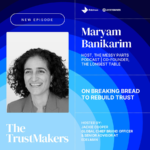By Greg Landon, Head of Growth, SALESmanago
Until recently, eCommerce marketers were able to strike a mutually beneficial deal with Google. The deal had been in place for over 20 years and its terms were broadly as follows.
Google dominates global search, acting as a virtual monopoly. Due to this, it accurately tells marketers how many people are searching for individual terms and topics. Marketers use this info to optimise their websites for their specific niches. And if they are good at SEO, they get a predictable stream of traffic to their websites.
Marketers were willing to put up with challenges from Google – unpredictable algorithm updates, handing over more and more control on pay-per-click (PPC) models, changing search engine results page (SERP) formats, etc – to fulfil that deal.
Yet that deal relies on one more thing to work: consistent click-through-rates (CTR). Because if the rate at which people click those Google results drops, then fewer people end up on marketers’ websites, no matter how good their SEO or PPC is.
Now, AI is causing CTRs from search engines to plummet, and with it, upending the whole deal with Google that has been in place longer than some marketers have been alive.
The new reality
A majority – 59% – of all Google searches in the EU last year ended without a click. So, if you looked up Google search data and found that, say, 1,000 people a month searched for a product in your niche, statistically, less than 500 people would have even reached a website after searching for it.
Google SERPs are also increasingly dominated by Shopping and Search adverts taking up large real estate right at the top, meaning a chunk of those ‘less than 500’ clicks are lost to those with large PPC budgets. The rest go to organic links, and those with good SEO. Yet research suggests that the CTRs for organic rankings as high as position three or four are still in single digit percentages.
Imagine an SMB marketer sees 1,000 people a month searching for their niche product on Google. They invest heavily in SEO, and they rank in a very respectable fourth position. They might get 7% of the 400 actual clicks per month Google gets on 1,000 searches, or 28 clicks.
Twenty eight clicks from a supposed pool of 1,000 people. It’s clear why the old deal isn’t working anymore.
Generative AI’s role
The biggest new factor driving down CTRs from Google is generative AI, for two very different reasons.
The first reason is that Google is starting to cram AI-generated responses near the top of search results – known as Search Generative Experience. This is a direct response to one of the few times Bing posed a serious market share challenge to Google.
In 2023, Microsoft, which owns Bing, announced shortly after it bought OpenAI (owners of ChatGPT) that it would roll out ChatGPT across Bing’s search results. To combat Bing’s potentially industry-leading move, Google, by its own admission, rolled out its own AI-powered search tools sooner than expected. Since then, Google’s incorporation of AI has only increased, to the point where searches now commonly feature generative AI regardless of topic or content.
These AI responses take up much more real estate than traditional search links. They commonly feature few links, and have smaller clickable areas than traditional listings. So it’s only natural they contribute to decreasing CTRs, especially as incorporating them has become something of an arms race for search engines.
Why has Google done this? Because of the second major reason that Gen AI is shaping the future of brand awareness and traffic. We, as a society, are demanding it.
Not SEO, but AEO
ChatGPT’s explosion into global public consciousness could be argued to be a defining technological advance of our times. It alone has 400 million active weekly users worldwide. In 2023 it was the standard, but now the likes of Claude, Gemini, DeepSeek and Grok are all battling for a growing user base.
Virtually every major SaaS and tech platform has launched AI agents and functionality in the time since. Co-pilots have become known and accepted things for anyone to use. Young people are growing up with tools that can write essays and weekend plans at the drop of a hat. Suddenly, traditional search results pages of old fashioned links, which require clicking and don’t immediately show you the info you want, seem very outdated.
So, for eCommerce brands, a new field has emerged. Not SEO, but AEO: Answer Engine Optimisation. Rather than focusing on search engine ranking, AEO aims to optimise content for AI searches, looking to directly answer questions that users might ask.
For the future of eCommerce, AEO actually increases the quality and relevance of content for users. Google is still dominant, but generative AI has transformed search methods and decreased CTRs as we know them. It’s a new reality eCommerce marketers are quickly having to adjust to.
Marketing’s response
However, marketers still need to find ways to hit marketing targets. With traffic coming at more of a premium, an obvious approach is to focus less on traffic and more on conversion.
The average conversion rate on eCommerce websites ranges from 1.8 to 3.7%. Put another way, 96 to 98% of eCommerce visitors do not buy anything.
If marketers are going to consistently see less traffic from Google, then ensuring more of their existing traffic converts is paramount – especially as relying on paid traffic is inherently inflationary and difficult to predict.
The old deal may have gone, but the end goal for marketers hasn’t changed. Focusing on conversions rather than clicks might be the only way to keep hitting goals in a world where gen AI has overhauled traditional search.











